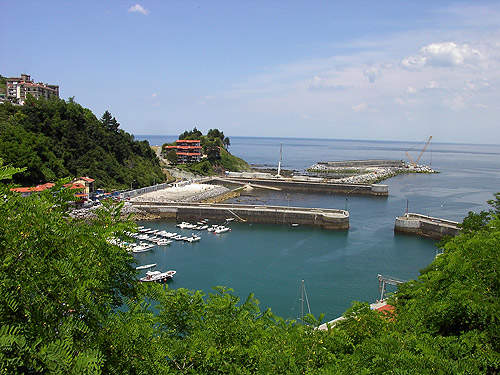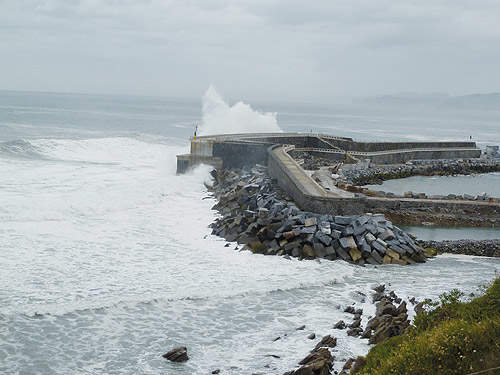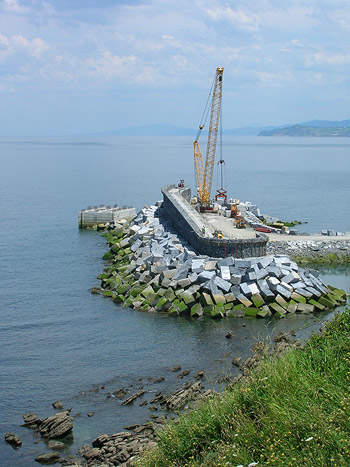The Mutriku wave energy plant was officially commissioned by Spanish utility Ente Vasco de la Energía (EVE) in the Basque Country, Spain, in July 2011.
The plant generates an output of 296kW, enough to power 250 households. Built with an investment of €6.4m, the wave energy project helps reduce 600t of carbon emissions annually.
It received financial assistance from the European Commission’s Seventh Framework Programme, an initiative to fund research and technological development in Europe.
Global potential of oceanic wave energy is estimated at 1.8TW but is largely untapped. The Mutriku plant is expected to spur similar developments across the world to tap this energy.
The plant celebrated five years of operations in 2016, which also coincided with the milestone of the first gigawatt output. Mutriku is the first such installation in the world to achieve this production feat.
In 2019, the Mutriku plant was integrated into the Biscay Marine Energy Platform (BiMEP), an open-sea facility established to support research, technical testing and commercial demonstration of utility-scale floating marine renewable energy devices.
In February 2020, the power plant achieved the milestone of generating a cumulative output of 2GWh since its commissioning, setting a new production record for a plant that harnesses ocean waves for power generation.
Development of the Mutriku plant
Mutriku harbour, which is located in the Bay of Biscay, is regularly hit by strong storms that often cause damage to the piers. The storms also lead to instability and have been known to cause several boat accidents. To address this problem, the Basque Government approved a plan to build a 440m-long, detached, rubble mound breakwater facility.
After approving the breakwater project, the Basque Government approached EVE to develop a wave energy plant that could use the breakwater without affecting its primary functions.
Several technologies were examined, and Voith Siemens Hydro’s oscillating water column (OWC) technology was chosen because of its simple and non-disruptive design.
Construction of the Mutriku wave energy plant
Construction of the Mutriku power plant began in 2006. The OWC was built on a 100m section of the breakwater facility’s outer wall. The foundation for the plant was laid by digging a trench to a depth of 0.50m, width of 14.25m and length of 102m.
The facility features 16 air chambers made of four open fabricated parts and 12 closed parts. Each part was lifted into place using cranes with a 50t lifting capacity.
Once the parts were in place, submerged concrete was poured to reinforce the entire structure. The chambers were then covered with 80cm-thick prefabricated slabs made of reinforced concrete.
Mutriku plant details
The design of the Mutriku plant includes a hollow structure forming a trapezium shape. The structure has a front opening, which is submerged under the water, and an opening at the top.
The front opening is 3.20m high and 4m wide. The hollow structure contains 16 air chambers, which house 16 Wells turbines.
Each turbine is 2.83m high, 1.25m wide and weighs 1,200kg. The turbines do not have a gearbox, hydraulics or pitching blades. They are simple, reliable and work with air.
The turbines are connected to a turbo generator with a capacity of 18.5kW. The turbo generator features a butterfly valve at the bottom to isolate it if necessary. Fresh water injectors clean the blades of the turbo generator to remove accumulations of salt and other impurities.
The plant also includes control and power conditioning equipment, a transformer centre and a power take-off (PTO) line.
OWC technology at the Mutriku wave energy plant
The OWC technology used at the Mutriku plant is provided by Voith Siemens Hydro subsidiary Wavegen. The technology has been tested in a demonstration plant in Scotland since 2000 and was launched commercially with the new facility.
The technology can be used in existing or new breakwater structures. The innovative concept enables the existing marine infrastructure to be used for generating power, thereby minimising construction costs.
Sea water enters the air chambers of the breakwater facility through the opening at the front. When water enters the chambers, the air present is compressed at high pressure and pushed out the opening at the top.
This high-pressure air turns the turbine, which is connected to the generator, thereby producing electricity.
When the water recedes, the air is decompressed, which turns the turbine again.
The sea water never comes in contact with the turbines. Electricity is generated only with the movement of air. This feature greatly improves the life of the equipment.









